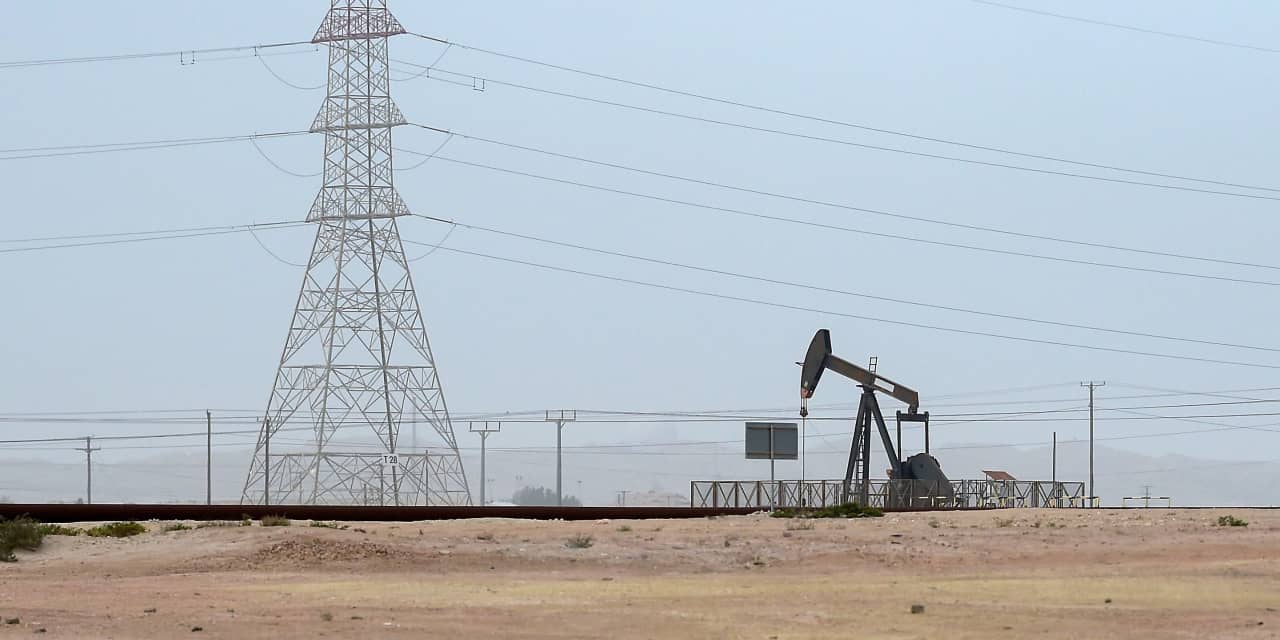Oil prices settled Monday at their highest level in about a month, finding support from ongoing risks to global supplies as a rally in U.S. equities lifted prospects for the economy and energy demand.
Price moves
-
West Texas Intermediate crude for February delivery
CL.1,
-2.31% CLG24
rose $1.78, or 2.4%, to settle at $75.19 a barrel on the New York Mercantile Exchange on the contract’s expiration day. March WTI
CL00,
-2.31% CLH24,
-2.31% ,
the most actively traded contract, added $1.51, or 2.1%, at $74.76 a barrel. -
March Brent crude
BRN00,
+0.20% BRNH24,
-1.40% ,
the global benchmark, rose $1.50, or 1.9%, to $80.06 a barrel on ICE Futures Europe. Front-month Brent and WTI crude futures settled at their highest since Dec. 26, according to Dow Jones Market Data. -
February gasoline
RBG24,
-3.33%
added 3.5% to $2.24 a gallon, the highest finish since Nov. 29, while February heating oil
HOG24,
-0.46%
climbed by 1.2% to $2.69 a gallon. -
Natural gas for February delivery
NGG24
settled at $2.42 per million British thermal units, down 4%.
Market drivers
Oil traders are “starting to realize, with the stock market breaking record highs, that it’s unlikely that we’re going to see an economic recession,” Phil Flynn, senior market analyst at The Price Futures Group, told MarketWatch. That is “adding to demand expectations at a time when the supply situation looks to be tightening.”
“Demand is going to exceed expectations if the economy continues to grow, and that’s going to leave a bigger supply deficit once we get deep into the new year,” he said.
Tensions in the Red Sea and tensions between China and Taiwan show that the risk to oil supply is “high at the same time North Dakota oil production took a hard hit from the cold, reducing output for at least the rest of the month,” Flynn said.
There’s also a possibility they will get hit with another storm in February, he said, and it’s going to be harder for firms to increase the rig counts because of the bad weather.
“Positive risk sentiment” is also helping to fuel oil’s rise, said Fawad Razaqzada, market analyst at City Index and FOREX.com, with major U.S. indices moving toward fresh uncharted territories as the tech-fueled rally continues.
The positive risk sentiment from equity markets is “helping to boost the appetite for other risk assets, including crude oil,” he said.
Last week, WTI oil rose 1%, based on the front-month contract, while Brent eked out a 0.3% rise.
Oil’s gains last week were driven largely by the cold weather in North Dakota and other parts of the northern U.S. that resulted in production outages, analysts at Sevens Report Research wrote in a Monday note.
Crude has occasionally popped higher around developments in the Middle East, but has failed to build in a geopolitical-risk premium, with WTI trading around $20 a barrel below its 2023 high set in late September.
In a recent note, analysts at J.P. Morgan said that based on their pricing model, there is likely “no geopolitical premium in the oil price” despite the U.S.-led strikes on Yemen’s Houthi rebels, who have been attacking shipping vessels passing through the Red Sea.
That likely reflects that the “global oil impact of shipping disruptions in the Red Sea is likely to be small and easily handled,” they said.
Oil-shipping companies can “reroute tankers around the southern tip of Africa to avoid the narrow Bab el-Mandeb strait at the southern end of the Red Sea,” the J.P. Morgan analysts said. Such a major rerouting is expensive and lengthens the voyage by about eight to nine days, “increasing fuel and insurance costs and adding about $2 to the Brent oil price.”
The Gulf Arab states also rely “extensively on overland pipelines,” they said, noting that Saudi Arabia can use its East-West mega pipeline, bypassing the strait to transport crude from its fields in the Persian Gulf to the city of Yanbu on the Red Sea.
See: Oil traders aren’t panicking over Middle East shipping attacks. Here’s why.
In the U.S., futures prices for natural gas fell for a fifth straight session to their lowest finish since Dec. 14.
Heating demand for natural gas is “expected to see a quick reversal lower this week,” with the the U.S. National Oceanic and Atmospheric Administration forecasting the return of above-average temperatures for the entire lower 48 states starting this week through early February, said Victoria Dircksen, commodity analyst at Schneider Electric.
Read the full article here













Leave a Reply